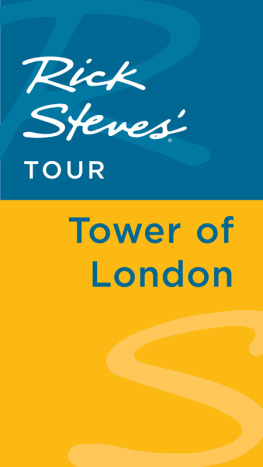
About this book
Symbols are used to denote the following categories:
 | map reference to maps on cover |
 | address or location |
 | telephone number |
 | opening times |
 | admission charge |
 | restaurant or caf on premises or nearby |
 | nearest underground train station |
 | nearest bus/tram route |
 | nearest overground train station |
 | nearest ferry stop |
 | nearest airport |
 | other practical information |
 | tourist information office |
 | indicates the page where you will find a fuller description |
This book is divided into six sections.
The essence of London
Introduction; Features; Food and drink; Short break including the 10 Essentials
Planning
Before you go; Getting there; Getting around; Being there
Best places to see.
The unmissable highlights of any visit to London
Best things to do
Great traditional pubs; Top activities; Places to take the children and more
Exploring
The best places to visit in London, organized by area
Excursions
Places to visit out of town
Maps
All map references are to the maps on the covers. For example, Buckingham Palace has the reference  indicating the grid square in which it is to be found.
indicating the grid square in which it is to be found.
Admission prices
Inexpensive (under 5)
moderate (510)
expensive (over 10)
Museums and galleries listed as free may encourage visitors to leave a donation
Hotel prices
Prices are per room per night:
budget (under 100);
moderate (100200);
expensive to luxury (over 200)
Restaurant prices
Price for a three-course meal per person without drinks:
budget (under 25);
moderate (2550);
expensive (over 50)
Contents






The essence of

Introduction

London is such a varied and cosmopolitan city that there is a bewildering choice of things to do and see. Perhaps inevitably, visitors feel compelled to tick off its major sights at breakneck speed, but this is no way to get the flavour of the city. The key is not to rush, not to feel you have to see it all (you never will) and not to overlook the simple indigenous pleasures of London. Just for a day or two, forget the museums, the historical attractions, and especially the crowded West End stores. Instead, rummage through a street market stall, stroll in the parks and enjoy a pint in a theme-free pub.
Features
London mixes ancient and modern with ease, warm, red brick with glass and steel. The great London institutions of the , the museums of South Kensington and the Royal Opera House have all undergone major improvements. New landmarks such as the London Eye and the Swiss Re Tower nicknamed The Gherkin grace the skyline and Londons South Bank and Docklands have sprung to life. Meanwhile, visitors returning to the capital can rest assured that the quiet leafy squares, the parks and the myriad tiny unspoiled churches, pubs and shops soldier timelessly on.

London already boasts world-famous venues, such as Wembley Stadium (association football or soccer), Wimbledon (tennis), Twickenham (rugby union) and Lords (cricket). Its sports lovers are already looking ahead to 2012, when London hosts the Summer Olympic and Paralympic Games in the East End of the city.

GEOGRAPHY
London is the largest city in Europe, a ragged oval stretching over 50km (31 miles) across. However, most of Visitors London is condensed into Inner London, the area bounded by the undergrounds Circle Line.

The best way to see the capital is by a combination of underground (Tube) and walking.

LOCALS AND VISITORS












































